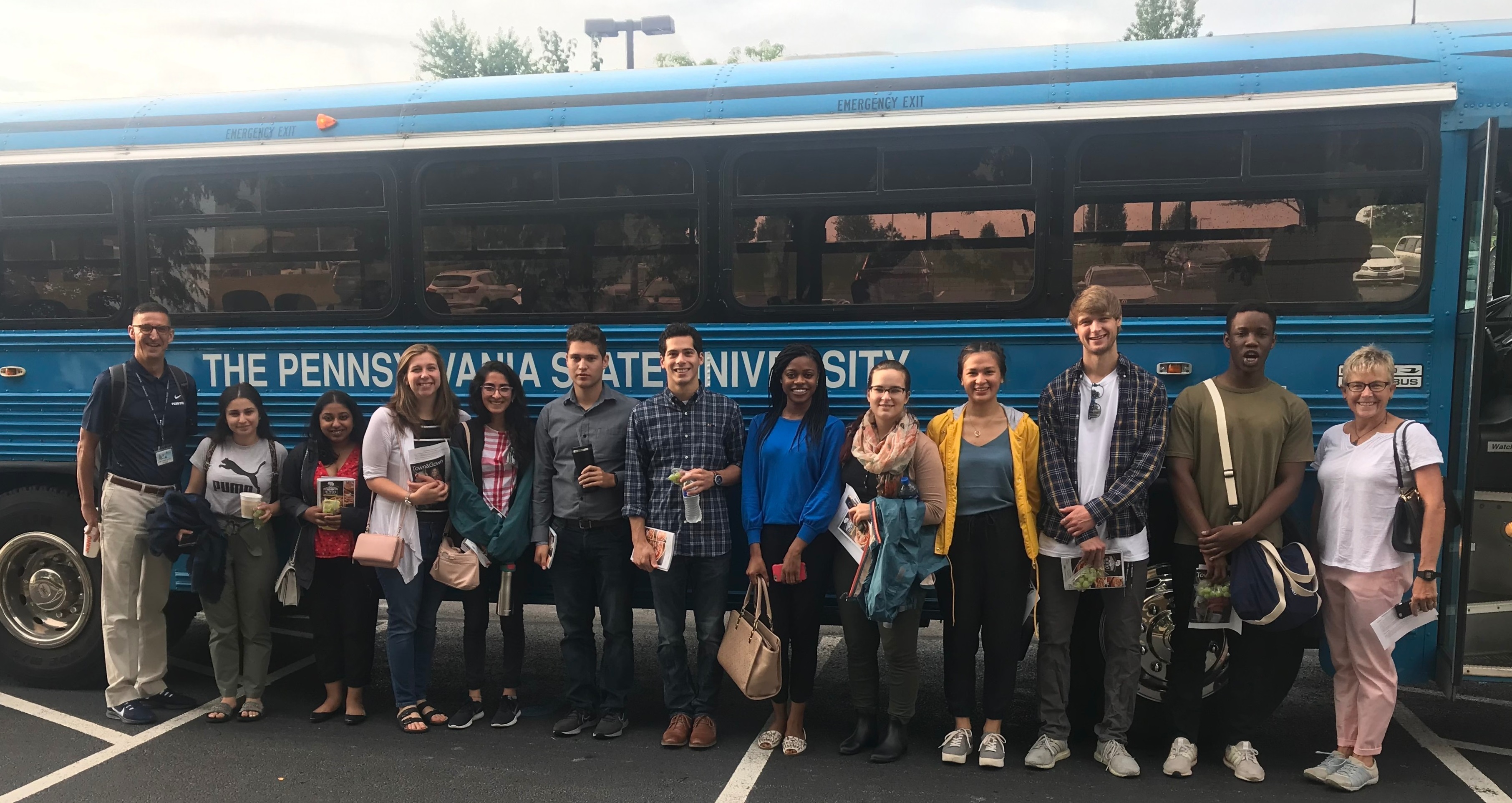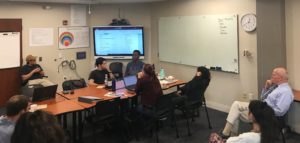On alert: first-year medical students learn emergency preparedness

In an emergency, doctors need the same skills that first responders practice – the ability to analyze available information, ask the right questions and make the best possible decisions, given what they know.
That’s why the 12 first-year students in Penn State College of Medicine’s University Park Curriculum participate in an exercise called EpiCentre, a joint effort between the College of Medicine and the College of Information Sciences and Technology that encourages clinical reasoning development.
“The exercise helps students learn how to take care of patients in the face of a medical outbreak,” said Dr. Mark Stephens, a family physician from Penn State Health Medical Group ― Park Avenue, whose idea it was to bring the exercise to medical students. This year, the group was assigned the hypothetical emergency of a measles outbreak. “We kept feeding new pieces of information to the students to help them figure out the diagnosis and identify resources in their local community to respond to it.”
EpiCentre evolved from an exercise developed by retired U.S. Marine Corps Col. Jake Graham, a Penn State College of Information Sciences and Technology professor of practice, and his students, which Stephen saw presented at a Penn State alumni event.
“The Analytic Decision Game, or ADG, as a pedagogy for clinical reasoning wasn’t originally intended for medical students, but it’s very closely aligned to methodology used in critical reasoning,” Graham said. “Because it happens early in the students’ medical school education, it’s a great icebreaker and team builder – and it introduces them to clinical reasoning methodology early on.”
The ADG, developed at Penn State, promotes the application of structured analytic techniques to respond to natural and manmade crises – or, in this case, health threats.
The event takes place during National Preparedness Month, recognized each September to promote family and community disaster emergency planning.
“Through observations, patient interviews and review of patient records, the students build their evidence list, do an analysis, look for linkages and build inferences to arrive at a differential diagnosis to present to the resident physician,” Graham said. “Other students roleplay as patients and physicians.”
Second-year medical student Kyuseok Im, who helped planned this year’s event, heralds team collaboration as an important building block for medical education and future practice. “Navigating the dynamics between different people to develop a solution to a multi-faceted problem and learning to play on one another’s strengths, interests and skills is very valuable,” he said.
As a backdrop to the exercise, students took buses to rural areas of Centre County such as Bellefonte, Howard and Penns Valley to meet with school and government representatives and get the lay of the land. The field trip incorporates the important cultural component that must be considered during crisis solving and gives students a better idea of the clientele in the area, Graham said.
“These local leaders were able to give students a sense of what communities need from health care, and it’s great for leaders to see what the next generation of physicians looks like,” Stephens said. “We don’t want to be an isolated academic enterprise – we want to be engaged with our community.”
Knowing the basics of doing a community health assessment should serve the students well in the future when they land jobs in communities where they can reproduce it, Graham said.
Pratiti Roy, a second-year medical student who helped coordinate this year’s EpiCentre, highlighted the value of time spent studying the dynamics of the community.
“Wherever you go, as a medical student or later in your career, it isn’t enough to just know the clinical information to treat your patients – you need to understand the context,” she said. For example, it’s important to know that internet connection is unreliable in some rural areas of Centre County, so it’s not safe to assume patients are seeing messages that providers may send through their patient portals.
Besides expanding students’ knowledge of Centre County, EpiCentre helps them to recognize personal attitudes and learning preferences that might help or hinder teamwork as well as teaches active listening and appreciative inquiry skills, Stephens said.
EpiCentre also serves as a good example of the value of collaboration across disciplines, Graham said.
Beyond all the learning and preparedness training, EpiCentre is “just fun,” he added. “I’m ready for No. 5 next year.”
EpiCentre is a standout activity in her time thus far at Penn State College of Medicine, Roy said.
“As a whole, our curriculum at the University Park medical campus is a little unconventional and constantly in flux,” Roy said. “One of the many reasons I love our campus is how receptive the faculty are to changing things for the better. I’m not only able to actively contribute to my own education, but to leave a mark on the education of future classes.”
If you're having trouble accessing this content, or would like it in another format, please email Penn State Health Marketing & Communications.

